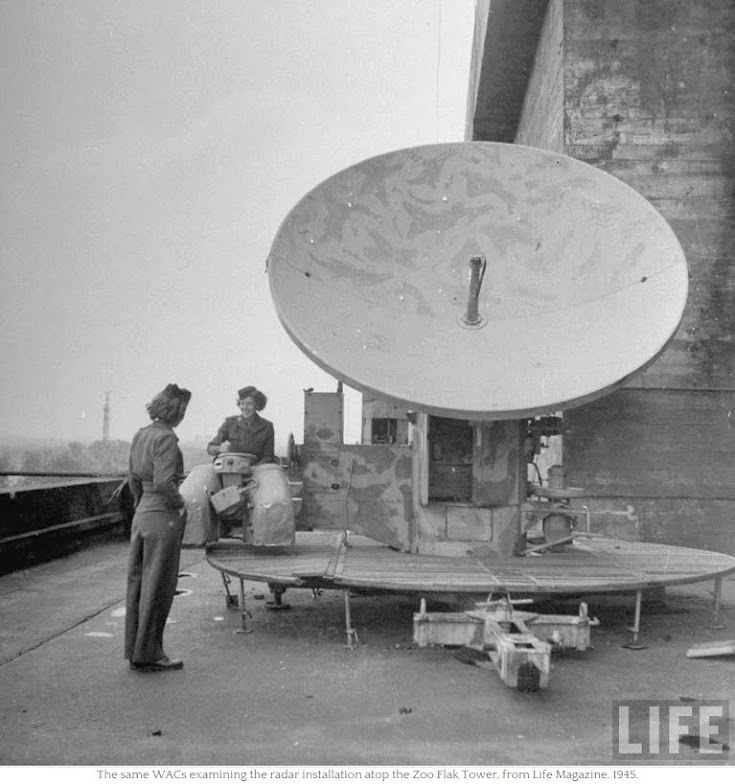Remnants of War
When walking in the park (Volkspark) in Friedrichshain with Guido's aunt she pointed out the hill that dominates the landscape and told me that it was built from the rubble left by allied bombing. She added that that place was chosen in order to bury a 'flak tower'.
On the flight over I had been reading Joseph Kanon's Leaving Berlin set after the War. Then Emily leant me Ken Follet's Winter of the World - not as well written but well researched and much more voluminous. So this reference to Flak Towers sparked my interest. Why would anyone bury a tower - why not just knock it down? Ken Follet told me that Berliner's loved them. They provided shelter and their guns told them that someone was fighting back against the waves of bombers that were trying to annihilate them.
So I did a bit of research. At the beginning of the Second World War the Third Reich did not believe in defence. Expenditure on defensive infrastructure detracted from the war effort and was often ineffective, so their slogan was: 'The best means of defence is attack'. They wanted to avoid at all costs the defensive stalemates of the First World War. But when against all their assurances Berlin came under attack from British bombers in 1940 they reluctantly and very rapidly constructed huge castle like structures called Flaktürme (Flak Towers).
They were built in pairs. The Gefechtsturm (the battle tower) was the gun tower and the largest. The smaller Leitturm (search tower) coordinated the defence. Berlin had three pairs. There were also three in Vienna, two Hamburg and others in Frankfurt and Stuttgart.
The word 'Turm' in German can mean 'tower' as in English. But it can also refer to a 'castle'. While the Leitturm resembled a substantially built water tower, the Gefechtsturm (G-tower) was a huge square thirteen story building half the size of a city block with outer walls 3.5 m (11 feet) thick ferro-concrete that looked more like a big castle. At each corner was a cylindrical tower containing a helical access stairway and each was topped with 128 mm (5.0 in) anti-aircraft guns firing explosive shells (producing flak). In addition, each tower had numerous rapid-firing 50mm guns for defence against low flying aircraft and attack on the towers themselves.

source: http://theelephantgate.weebly.com/the-war-comes-to-the-zoo.html
Allied bombs couldn't penetrate the towers and they acted as local air raid shelters for women and children and men over 70 years old. Men of fighting age were excluded. They also contained an emergency hospital.
So it turned out to be very difficult to remove them, particularly the Gefechtsturm. Towers in Hamburg, Vienna and Stuttgart have been repurposed but in Berlin they had been points of last resistance to the Russian invasion and their popularity with Berliners meant that they had to go. They were located in a triangle around the city. One at the Zoo; one at Friedrichshain and the third at Humboldthain. The only one to be fully demolished was at the Zoo in the British sector.
The French tried blowing up the Gefechtsturm at Humboldthain but success was illusive because of collateral damage to nearby railway tracks. The Russians were similarly unsuccessful at Friedrichshain in the Soviet sector. So the next best solution was to bury the recalcitrant monsters. Thus women, of which there were many more than men, the men being prisoners or dead, were put to work, carrying rubble from the city to cover the remaining towers. Hence Mont Klamott (Rubble Mountain) in Volkspark Friedrichshain.
I want to stay with the Flak towers for just a little longer because when I was looking at photographs of them I saw something that didn't make sense to me. There on the cover of LIFE magazine was a picture of US military women posing with a radar dish that was obviously operating in the microwave band.

source: http://theelephantgate.weebly.com/the-war-comes-to-the-zoo.html
How could that be? Surely microwave radar was an allied military secret along with proximity fuses? Yet these flak towers clearly had microwave radar controlled guns.
